
Vendée in the Reign of Terror...
"Le Logis de la Cabotterie"
June 25, 1998
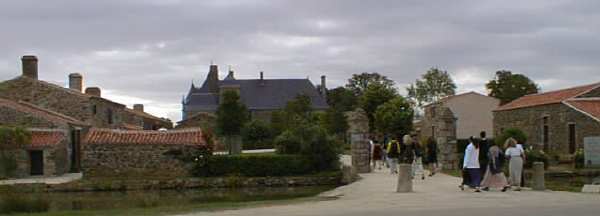
West Virginia University
in Vendée, France

Vendée in the Reign of Terror...
"Le Logis de la Cabotterie"
June 25, 1998

A "logis" is a special sort of plantation/fortress that evolved in Vendée during the the 1500's as the civil strife known as the "Wars of Religion" set brother against brother and Catholic against Protestant in one of France's most turbulent periods. The Chabot familiy of these years gave its name to this quaint, yet productive estate. As the years passed, this "logis", which like many others of this region was granted both agricultural and military rights, evolved into a complex and fairly autonomous economic unit. At the time of the French Revolution in the 1790's, most of the "logis" of the region were in the hands of nobles hostile to the values of the new Republic and its theme of "Liberty, Equality, Fraternity". Much of Vendée in fact rose up in arms against the Republic, which seemed to threaten all the traditions of faith and fidelity to the King that it cherished. A Revolution that promised justice to the starving peasant seemed in fact determined to give all its fruits to the already wealthy "bourgeois" merchants and businessmen. Nobles, churchmen, and peasants thus united to defend a way of life that seemed just and fair to both the wealthy and the poor. In 1793, a band of poor and humble Vendée peasants arrived at the doors of the manor of the ex-navy officer Charette, asking him to lead them in their fight to protect their traditions against the "Blue" forces of the revolutionary Republic. Charette, who had fled the country to England and who had only just returned to his islolated lands and at first maintained hopes of remaining aloof from these new troubles, accepted reluctantly the pleas of his faithful countrymen. He would nevertheless lead the resistance in its most valiant and long lasting struggle for "God and King". It would in fact take the most vehement efforts of the Reign of Terror and then the intelligent manoeuvres of the succeeding moderates to bring Charette to his knees. Captured in the nearby woods and brought to the Chabotterie in 1796, Charette would quickly be brought to the neighboring city of Nantes where he would be paraded before the people and shot as a rebel. Below is a statue of Charette pointing to his heart as he stands before the firing squad and says "Here you must strike to bring down the brave" ("C'est là qu'on doit frapper un brave"). After pronouncing these famous words, Charette then gave the signal to fire by the lowering of his head. At least one of the bullets made its mark.
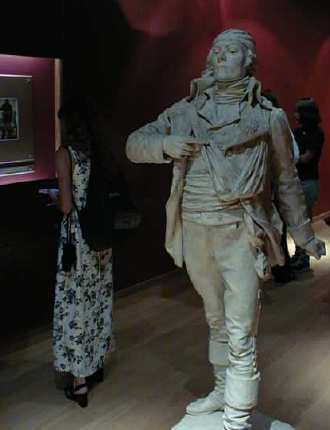
Below is the dining room of the Chabotterie as it was likely set when the
Revolutionary army took the grounds in the 1790's. The deaths of the two daughters
of the family who owned this house and its lands were necessary before the Republic
was able to conquer this farm/fortress. This conquest, however, would spare the
property from the flames that would destroy most of the other "logis" of the
region. Like Sherman marching through the South in our American Civil War, the order
was to destroy everything in the path of the soldiers of the Republic. Thus treks
the march to freedom...
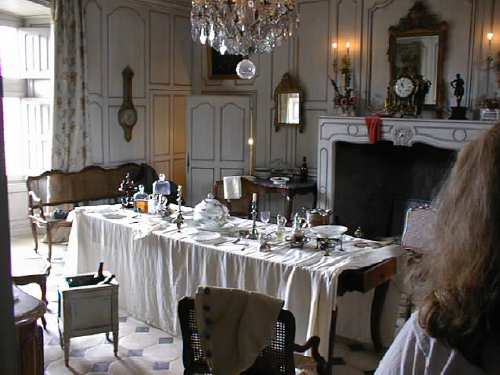
Today, the logis and its rich lands still produce the foods that nourished the
people here for centuries past. The well in the garden out back was an oasis for all
the plants of the gardens, both flowers and vegetables.
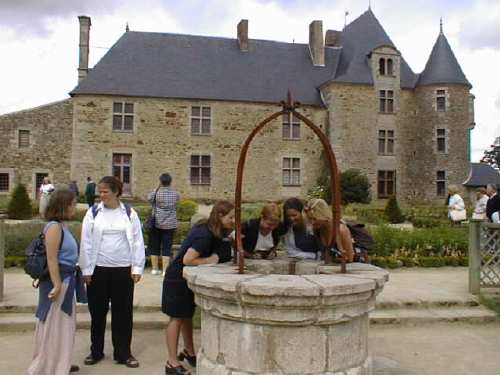
After a visit of the logis and its gardens, the WVU-Vendéens settle in for a gourmet luncheon in one of the most celebrated restaurants of the region.
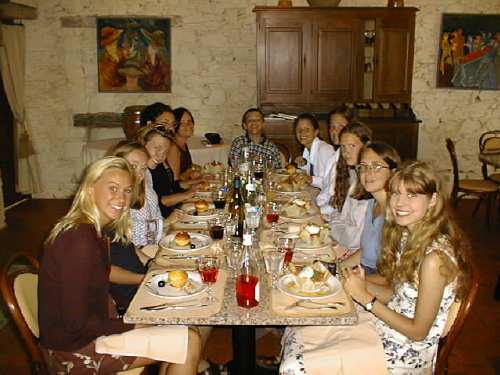
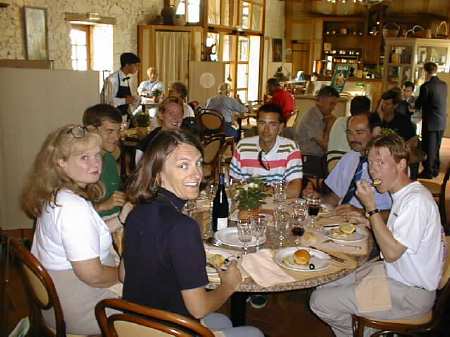
Each season the Chabotterie mounts a special exhibit along themes related to the region. This year, we visit a fascinating series of rooms exposing the voyages of famous Vendéens through the ages. A marvel to us all, the greatest surprise for me (a timid birdwatcher) was to learn that the family of John James (Jean-Jacques) Audubon was originally from our own Les Sables d'Olonne. The artist's precise birth place is unknown, but the result of his passion for birds, especially those of America, is familiar to us all.

After leaving the Chabotterie, we visit the Memorial de Vendée in nearby Lucs-sur-Boulogne, a village where hundreds of Vendéens resisters were killed by the Republican forces during the Revolution. Below, we see the principal arms of the Vendée peasant. The blades of the schythes were turned 90 degrees in order to convert a tool of harvest into an implement of war.
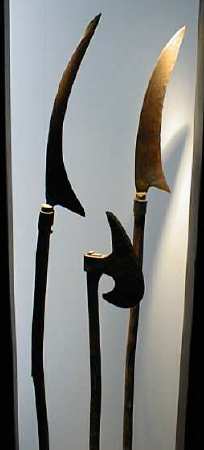
Below, each of the stones represents a Vendéen who died for "God and King".
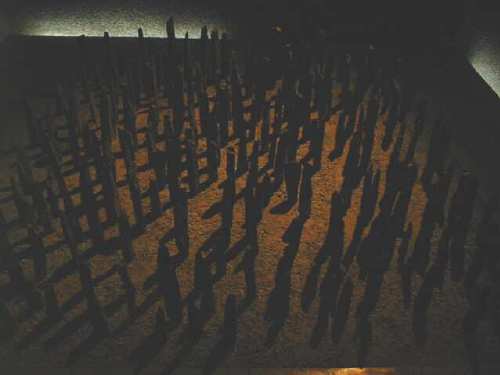
The church of Les Lucs-sur-Boulogne is a cherished site for the memory of the royal forces of Vendée.
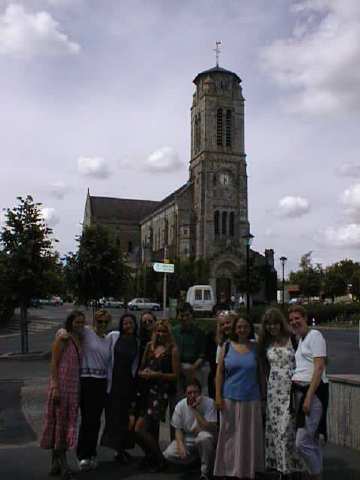
All the stained glasses of the church represent an episode of this turbulent
time. Below, we see the death on 28 February 1794 of the Abbey Voyneau, who was
executed by the Republicans for his "treacherous" activities.
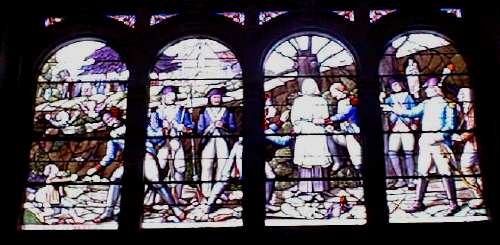
A whole series of windows in this church represent the deeds of the famous priest Barbedette who worked many miracles in his mission to resist the Republic. Below he is shown holding mass in the forests of Vendée, where all priests who refused to pledge allegiance to he republican constitution were forced to worship.
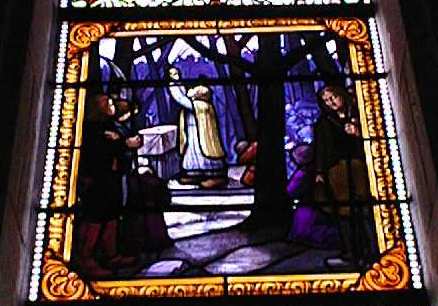
Stay tuned to WVU-V!
Go on to June 26, 1998.